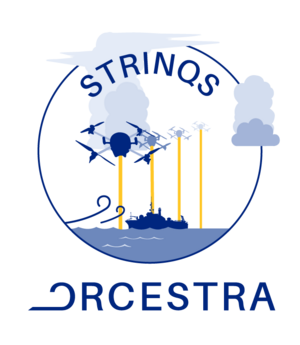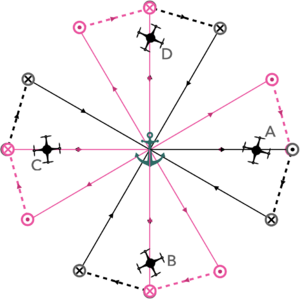STRINQS
| Project: STRINQS | |
|---|---|
| Section | ARS |
| Status | on-going |
| Start Date | 2024-07-01 |
| End Date | 2028-06-30 |
| Principal Investigator: | User:Geet George |
| Short Description | 4 meteorological quadcopter drones for boundary layer measurements |
Related Media
Project Participants
Geet George,Owen O'Driscoll,Rob Mackenzie
STRINQS stands for Soundings and TuRbulent eddy measurements in the ITCZ with a Network of QuadcopterS and is one of the campaigns under the umbrella of ORCESTRA, an international collaboration of measurement campaigns with the larger goal of understanding mesoscale organization of convection in the tropical Atlantic.
STRINQS will investigate the mesoscale structure of the ITCZ and the role of boundary-layer processes in organizing its structure by employing four meteorological drones. Co-ordinated drone flights (see sampling strategy figure) will be conducted with RV Meteor as the base.
The objective is to perform simultaneous but spatially separated soundings and leverage the capability of arrayed drones in order to derive area-averaged mesoscale vertical velocity. The drones will also provide high-resolution atmospheric soundings of temperature, humidity, pressure, and 3D winds up to a height of 1.5 km.
These measurements will be used to understand the variability of turbulent fluxes within and above the mixed layer, of updrafts and downdrafts as well as of cold-pools. This understanding will quantify the role played by these sub-mesoscale processes in the boundary layer in determining the ,mesoscale structure of the Atlantic ITCZ. Along with synergies with other sub-campaigns during ORCESTRA, STRINQS will provide measurements that will help to:
a. Distinguish boundary-layer features between the doldrums and the convergence bands
b. Investigate the relationship between up/downdrafts and boundary-layer features and
c. Understand the role of cold-pools in regulating the organization of convection.


